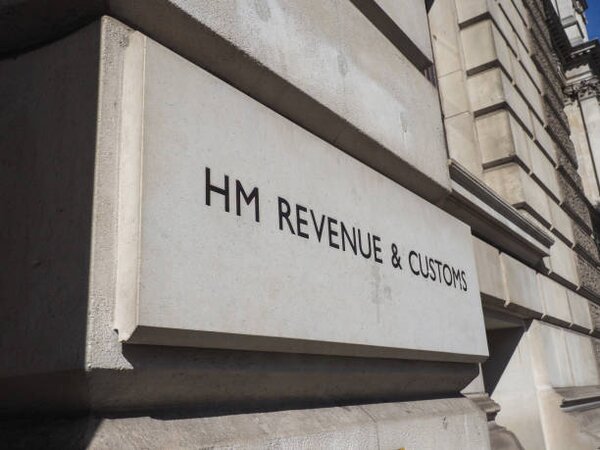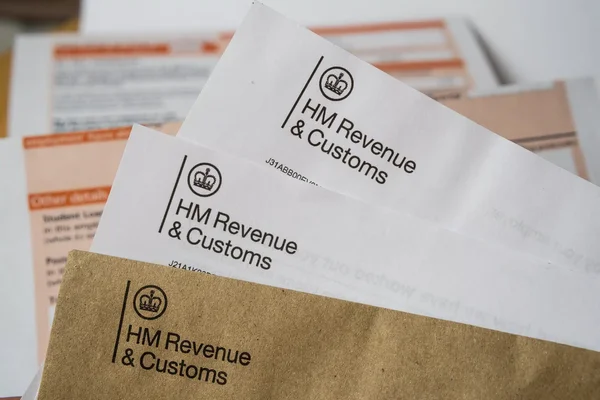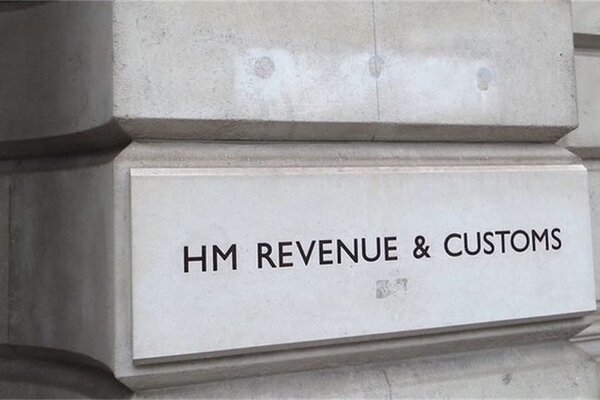How Do I Claim a Tax Refund Guide
Did you know that you might be eligible for a tax refund if you have overpaid taxes or qualify for certain tax benefits? Understanding “how do i claim a tax refund” and the process of claiming them can help you avoid leaving money on the table. In this comprehensive guide, we will walk you through everything you need to know about tax refunds, from determining your eligibility to receiving your hard-earned money back.
Understanding Tax Refunds
A tax refund is the sum of money that taxpayers may be eligible to receive from HM Revenue & Customs (HMRC) if they have overpaid their taxes or are entitled to tax benefits. Understanding your tax situation helps avoid paying too much tax and potentially paves the way for a tax refund.
So, why do tax refunds exist? The tax system is complex, and it is not uncommon for individuals to pay more tax than they owe during a tax year. HMRC tax refunds help rectify these situations and return the overpaid amount to taxpayers.


Claiming a tax refund involves the following steps:
Consult an expert to ascertain eligibility.
Submit the required paperwork to HMRC.
If a query has been raised regarding your self-assessment, the process may take a bit longer, but don’t worry - it’s all part of ensuring you receive the correct refund amount.
Keep in mind that the amount of time required for a response from HMRC may vary depending on individual circumstances and the type of query.
Determining Your Eligibility for a Tax Refund

Tax rebate eligibility isn’t universal, but overpaid income tax could qualify you for a refund. So, what factors make you eligible for a tax refund? You may qualify if you have overpaid income tax or have employment-related expenses that can be claimed. Examples of employment-related expenses include work-related costs, clothing repairs or cleaning, and the maintenance or replacement of essential tools or equipment. These expenses can be used to claim tax relief if you are eligible.
How do you determine if you are eligible for a tax refund? We recommend using Pie’s free online tax calculator to estimate the amount of HMRC tax refunds you might be eligible for.
Gathering Necessary Documents and Information
Claiming a tax refund necessitates gathering all pertinent documents and details regarding your income and tax status, including your assessment tax return. This includes income statements, tax codes, expense receipts, and records of tax deducted.
The following subsections elaborate on the types of documents and information necessary for collection.
Income Statements and Tax Codes
Income statements and tax codes are pivotal in ascertaining your tax refund eligibility. Accurate income statements and tax codes are used to calculate the amount of tax you should pay. If your tax code is incorrect, you could end up overpaying income tax and be entitled to a tax rebate. To prevent this, verify your tax code to maintain an accurate reflection of your tax situation.
You can find information about tax codes in various guides and FAQs available online. These resources can help you understand the meaning of your tax code and how to verify it. If you need further assistance, don’t hesitate to consult an expert or contact HMRC directly.
Personal Tax Account on HMRC Website
After assembling all necessary documents and information, access your Personal Tax Account on the HMRC website for key tax details.
To access your personal tax account, you must first register with the Government Gateway. Your personal tax account provides access to important tax information such as income statements and codes, expense receipts and records, and other related data.
Expense Receipts and Records
Alongside income statements and tax codes, expense records are also necessary for a tax refund claim. Eligible expenses for a tax refund include job-related costs such as home office expenses, clothing, and tools required for the job. It’s important to demonstrate what you are spending to fulfill your job duties in order to reclaim all qualified expenses.
Using Online Tools and Calculators
Numerous online tools and calculators are available to estimate your tax refund and verify your eligibility for tax rebates. Tax Rebate Services’ income tax and tax refund calculators, for example, can help you determine how much tax you have paid and if you’ve paid too much income tax, as well as how to submit a claim for the tax rebate you are owed.
Contacting HMRC through Online Portal or Phone
Following registration with the Government Gateway, initiate your tax refund claim by contacting HMRC via their online portal or phone. It’s important to provide accurate and complete information when contacting HMRC to ensure a smooth refund process.
Remember to have all your gathered documents and information ready when you contact them, as they may request specific details to verify your eligibility and process your refund.
Completing a Self-Assessment Tax Return
A Self-Assessment tax return is essential for those who have income sources beyond their regular employment, such as self-employment income, rental income, or investment income. If you fall into this category, you are required to declare these earnings by completing a Self-Assessment tax return.
Make sure to include all your income sources, deductible expenses, and any tax you've already paid. Once you've calculated your tax liability, you'll have a clear picture of whether you're owed a refund or if you have additional taxes to pay.
Submitting Required Documentation
Upon contacting HMRC and verifying your tax refund eligibility, proceed with document submission. This may include:
•Income statements
•Tax codes
•Expense receipts
•Any other relevant records you have gathered
You can submit these documents to HMRC either through their online portal or by contacting their customer service line.
After submitting your documents, you can check the status of your tax refund by accessing your personal tax account on the HMRC website.
Claiming Your Tax Refund: A Step-by-Step Process

Having assembled all necessary documents and information, you can now proceed to claim your tax refund.
The following subsections guide you through the step-by-step process of claiming your tax refund, including registration with the Government Gateway, contacting HMRC, and document submission.
Registering with the Government Gateway
Claiming your tax refund begins with registering on the Government Gateway, an online service that verifies eligibility through a few questions before application submission.
Registering with the Government Gateway will grant you access to various online tax services, making it easier for you to manage your tax affairs and claim your refund. Once registered, you can access your personal tax account to view essential tax information and initiate the refund process.
Time Limits for Claiming Tax Refunds
Awareness of the time limits for claiming tax refunds is vital. The end of the tax year in which an overpayment was made is the starting point for submitting a claim for a refund. You would have four years to make such a claim. For example, if you overpaid tax during the 2019/2020 tax year, you have until April 2024 to claim your refund.
In some cases, such as when HMRC or another government department has made an error in your tax affairs, the Extra-statutory concession B41 may allow you to claim a refund for earlier years. However, this is generally unlikely, and it’s best to focus on submitting your claim within the standard time limit.


Tax Refund Scams and How to Avoid Them
During the tax refund claiming process, vigilance against tax refund scams is crucial. These scams often come in the form of fraudulent communications that appear to be from HMRC, aiming to obtain your personal and financial information or deploy malware to your computer.
To identify potential tax refund scams, be cautious of any unexpected or unsolicited emails, text messages, or phone calls that may seem to be from HMRC. Do not respond to such messages or click on any links provided.
If you suspect a scam, report it to the HMRC as soon as possible.
Receiving Your Tax Refund: What to Expect
Post successful tax refund claim, you might question the timeline and mode of refund receipt. Generally, the turnaround time for receiving a tax refund is between 5 days and 8 weeks.
The payment method for your tax refund may vary depending on your specific tax authority. For example, you may receive a cheque within a few weeks of the claim, or the refund may be automatically delivered to you within a few working days.
It is advisable to check with your specific tax authority for the exact timeline and payment method of receiving your refund.
Self-Employed Individuals and Tax Refunds
Overpayment of taxes could also entitle self-employed individuals to tax refunds. To claim a tax refund as a self-employed individual, you must complete your annual self-assessment and submit your self assessment tax return to HMRC. By doing so, you can determine if you have any owed tax or if you are eligible for a refund.
Be sure to include all necessary expenses related to your business operations when completing your self-assessment, as these costs can help reduce your tax liability on profits. By accurately reporting your income and expenses, you can ensure you receive any tax refund you are owed.
Summary
In conclusion, understanding how tax refunds work and the process of claiming them is essential for anyone who has overpaid taxes or is eligible for tax benefits. By following the steps outlined in this guide, you can ensure you receive the maximum refund possible and manage your tax affairs effectively. Remember to stay vigilant against tax refund scams and consult an expert if you’re unsure about any part of the process. With the right knowledge and resources, claiming your tax refund can be a smooth and rewarding experience.
Frequently Asked Questions
Do tax rebates happen automatically?
Yes, tax rebates do happen automatically in certain cases. HMRC will automatically issue a rebate if it finds that you have overpaid taxes after the tax year has ended.
How do I know if HMRC owes me money?
You can check if HMRC owes you money by looking out for a P800 letter from the government’s income-tax department. This letter will indicate whether you’re owed a refund or not.
However, it could also be an indication that you’ve underpaid your tax.
How do HMRC inform you of a tax rebate?
HMRC will inform you of any tax rebate through the post or via your pay at the end of the tax year, with a P800 or cheque delivered to you automatically or within around 14 days respectively.
Do not click on any links in scam emails, texts or voicemails.
How do I check my tax code?
Check your payslips or use the HMRC app or personal tax account to find your tax code.
What is the deadline for claiming a tax rebate?
You have until the end of the tax year four years after the overpayment was made to submit a claim for a refund.
I've lost nearly half of my receipts, and now HMRC wants them all. What should I do, and how much penalty should I pay?
If you've lost receipts, try to obtain copies from banks or suppliers. You can use 'provisional' or 'estimated' figures if you can't recreate all records. However, failing to pay enough tax may incur interest and penalties, depending on the reason for the error and potential lost revenue. Learn more about penalties on the HMRC website.
Why is there a debt on my account when I was told I'd be getting a refund?
Debt on your account could stem from various issues, such as incorrect tax payments by your employer/contractor or HMRC calculation errors. Contact HMRC directly to understand why your figure has been adjusted.
Can I get maternity leave if I'm self-employed?
Self-employed individuals can take maternity leave but are ineligible for statutory maternity pay. However, you may qualify for Maternity Allowance. Check your eligibility on the GOV.UK website.
Are training costs tax deductible?
HMRC allows deduction of business costs deemed "wholly and exclusively" for work purposes. Essential training for maintaining or improving current skills is deductible, while training for entirely new skills is not. Refer to the HMRC website for details on deductible expenses.
Is it normal for HMRC to pay your refund to your agent instead of you?
HMRC previously allowed refunds to be paid directly to tax agents with a valid Deed of Assignment. However, concerns over abuse led to HMRC reviewing this practice. Stay updated on changes announced by HMRC regarding refund payments.
Can 'therapy' be claimed as a work expense if you need it as a result of your job?
Therapy is generally not claimable as a work expense due to its personal benefit. However, some professions requiring regular visits to healthcare professionals may claim certain therapy expenses. Check HMRC guidelines for specific eligibility criteria.











